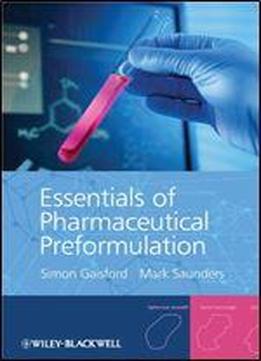
Essentials Of Pharmaceutical Preformulation
by Simon Gaisford /
2012 / English / PDF
10.9 MB Download
Essentials of Pharmaceutical Preformulation is a study guide which describes the basic principles of pharmaceutical physicochemical characterisation. Successful preformulation requires knowledge of fundamental molecular concepts (solubility, ionisation, partitioning, hygroscopicity and stability) and macroscopic properties (physical form, such as the crystalline and amorphous states, hydrates, solvates and co-crystals and powder properties), familiarity with the techniques used to measure them and appreciation of their effect on product performance, recognising that often there is a position of compromise to be reached between product stability and bioavailability. This text introduces the basic concepts and discusses their wider implication for pharmaceutical development, with reference to many case examples of current drugs and drug products. Special attention is given to the principles and best-practice of the analytical techniques that underpin preformulation (UV spectrophotometry, TLC, DSC, XRPD and HPLC). The material is presented in the typical order that would be followed when developing a medicine and maps onto the indicative pharmacy syllabus of the Royal Pharmaceutical Society of Great Britain Undergraduate-level pharmacy students and R&D / analytical scientists working in the pharmaceutical sector (with or without a pharmaceutical background) will find this text easy to follow with relevant pharmaceutical examples. * Essential study guide for pharmacy and pharmaceutical science students * Covers the pharmaceutical preformulation components of the Royal Pharmaceutical Society of Great Britainindicative syllabus * Easy to follow text highlighted with relevant pharmaceutical examples * Self-assessment assignments in a variety of formats * Written by authors with both academic and industrial experience * Companion website with further information to maximise learning











